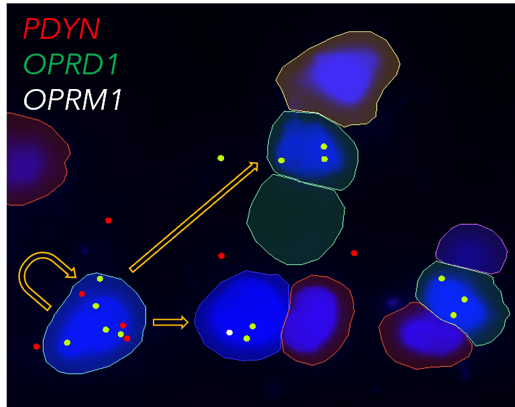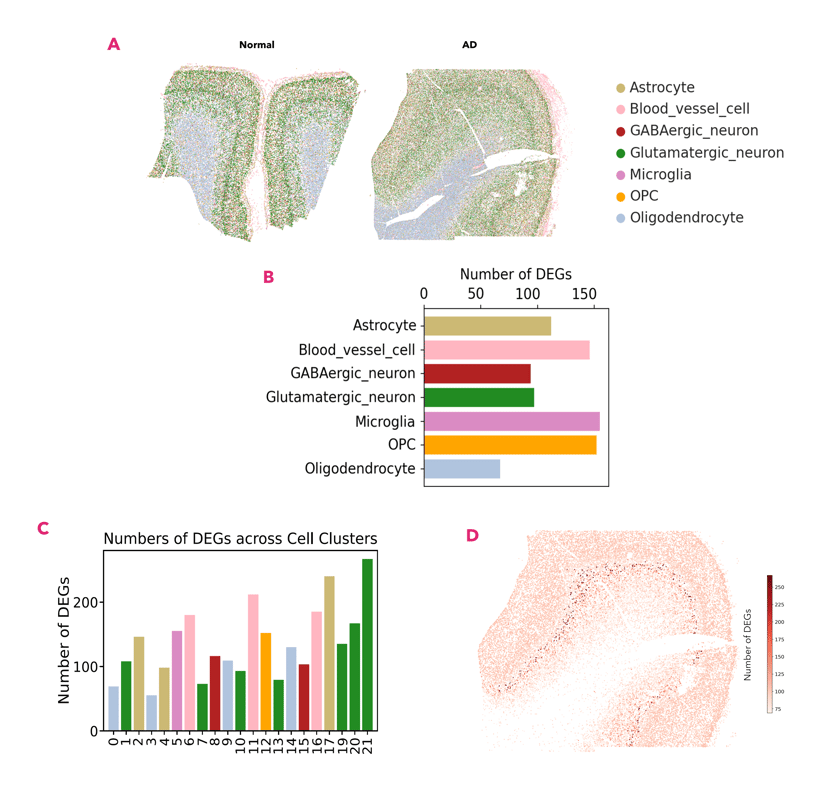Expand Your Limits with MERSCOPE 1000 Plex Gene Panels
Double the number of genes interrogated without sacrificing sensitivity or specificity
Spatial transcriptomics provides powerful insights into complex biology but can be limited by the maximum number of target genes detected. Vizgen’s 1000 Gene Panel solution for the MERSCOPE® Platform expands gene target capabilities without compromising data quality, enabling researchers to dive deeper into biological systems. The MERSCOPE 1000 Gene Panel sets a new standard that allows researchers to generate more spatial transcriptomics data all while maintaining class-leading relative sensitivity, accuracy, and specificity.

Do More with the MERSCOPE 1000 Gene Panel
Vizgen’s MERSCOPE 1000 Plex Gene Panels are fully customizable through the Vizgen Gene Panel Portal and use the sample sample preparation protocols as smaller gene panels.
MERSCOPE 1000 Plex Gene Panel Advantages
- Expands your gene targeting capability
- Increases your flexibility in selecting genes
- Provides your lab with high-quality spatial data by maintaining relative specificity, accuracy, and sensitivity
- Generates more data from one run
- Cost-effective by providing a lower price per gene
- Utilizes MERFISH chemistry
RESOURCE DOWNLOAD
Vizgen MERSCOPE 1000 Plex Gene Panel Flyer
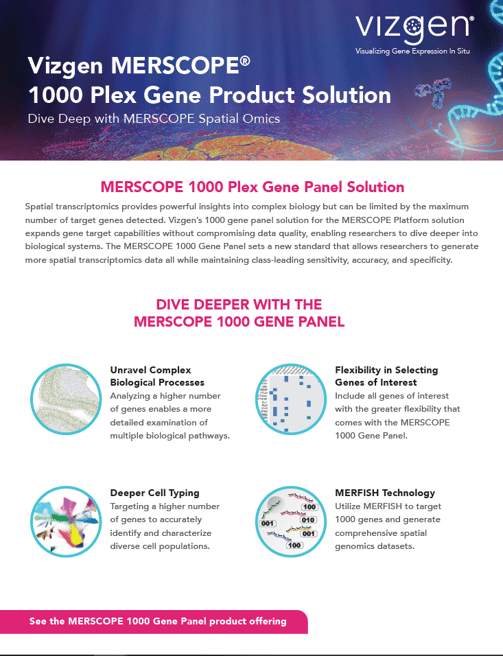
Download Now
Generate Meaningful Spatial Data at High Plex
Vizgen’s MERSCOPE 1000 Gene Panel and MERSCOPE 1000 Gene Imaging Kit provide researchers with the ability to expand their gene targets while maintaining high sensitivity, accuracy, and specificity.
High Accuracy
High Sensitivity: High Detection Efficiency
High Transcript Density

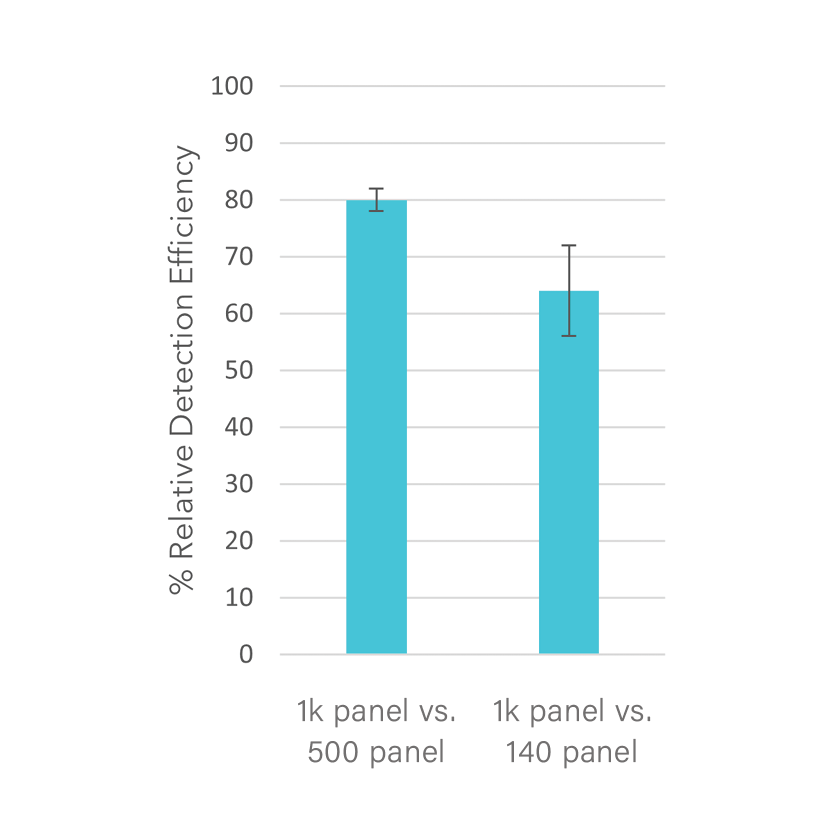
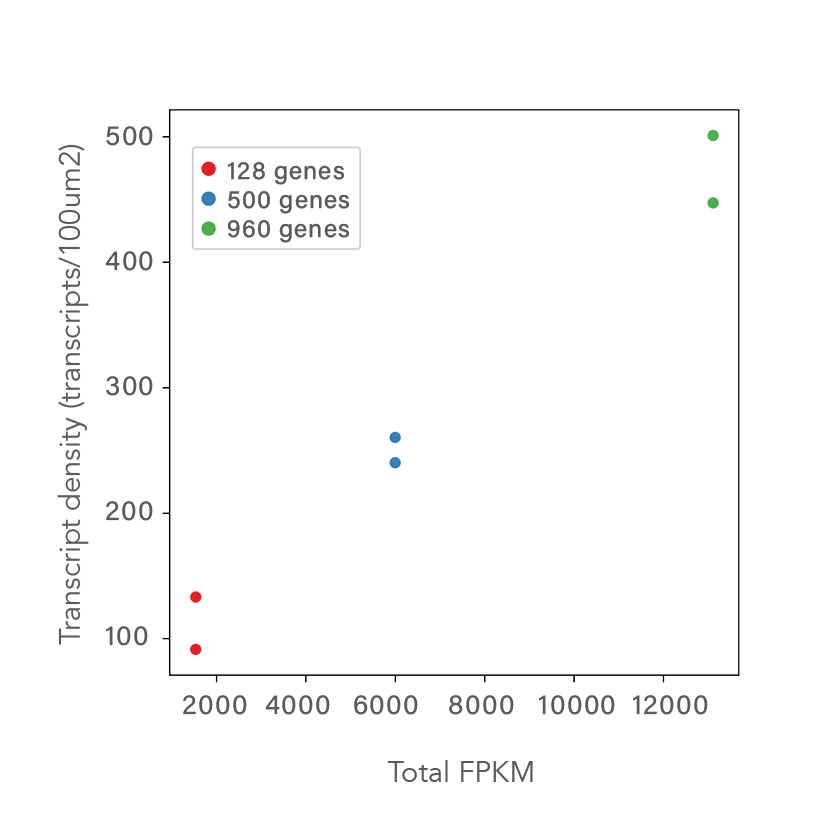
FIGURE 1
FIGURE 2
FIGURE 3
Figure 1: MERSOCPE 1000 Gene correlation to Bulk RNA-sequencing. Scatter plot showing the correlation between transcript counts of a custom 1000 gene MERSCOPE experiment from a coronal mouse brain section and mouse brain bulk RNA-seq data.
Figure 2: Comparison of a 1000 gene mouse brain panel to a 140 gene panel. Relative detection efficiency of genes shared between 1000 gene panel and 500 and 140 gene panels.
Figure 3: Transcript density comparison of different sized MERSCOPE mouse brain gene panels. Scatter plot showing the relationship between transcript density and total gene abundance measured as FPKM from bulk sequencing using a 1000 gene panel (green), 500 gene panel (blue), and 140 gene panel (red).
Unravel Complex Biological Process
Invesitgate Cell-to-Cell Interactions
Analyzing a higher number of genes enables a more detailed examination of multiple biological pathways. By including more cell typing gene markers and cell-to-cell interaction markers in 1000 plex gene panels for MERSCOPE, researchers can more closely study how cell-to-cell interactions are both cell type and spatially dependent.
Example: Ligand-Receptor Interactions
A 1000 gene panel for spatially imaging the human brain with MERSCOPE included known ligand and receptor genes, in addition to cell typing markers. The analysis of gene expression shows the co-expression of ligand-receptor pairs and spatial proximity, which is critical to understanding biological function. Spatial analysis shows true biological interactions: which types of opioid receptors can bind to the opioid ligand.
FIGURE 4
Figure 4: Analysis of ligand-receptor interactions in human brain. Red/PDYN-opioid peptide ligand, Green/OPRD1- delta opioid receptor 1, White/OPRM1- mu opioid receptor 1.
Study Complex Diseases with 1000 Plex Gene Panels for MERSCOPE: Alzheimer's Disease (AD) vs Normal Human Brain
1000 plex gene panels for MERSCOPE provide flexibility in selecting more genes of interest and utilize MERFISH to generate comprehensive spatial genomics datasets. With 1000 genes, researchers can perform cell typing and analysis of complex diseases such as the degeneration in AD brains vs normal human brains.
FIGURE 5
Figure 5: Cell typing and analysis of degeneration in AD brains vs normal human brain. A) Comparison of common neuronal cell types between normal vs AD human brain. B) Differentially expressed genes in each of the common cell types between normal vs AD. C) Differentially expressed genes between normal and AD brain by Leiden cluster. D) Spatial expression of most differentially expressed genes in AD brains show abnormal pattern.
Perform Deeper Cell Typing
Sub-typing of Neurons in the Human Brain with MERSCOPE 1000 Gene Panels
Target a higher number of genes to accurately identify and characterize diverse cell populations with MERSCOPE 1000 plex gene panels.
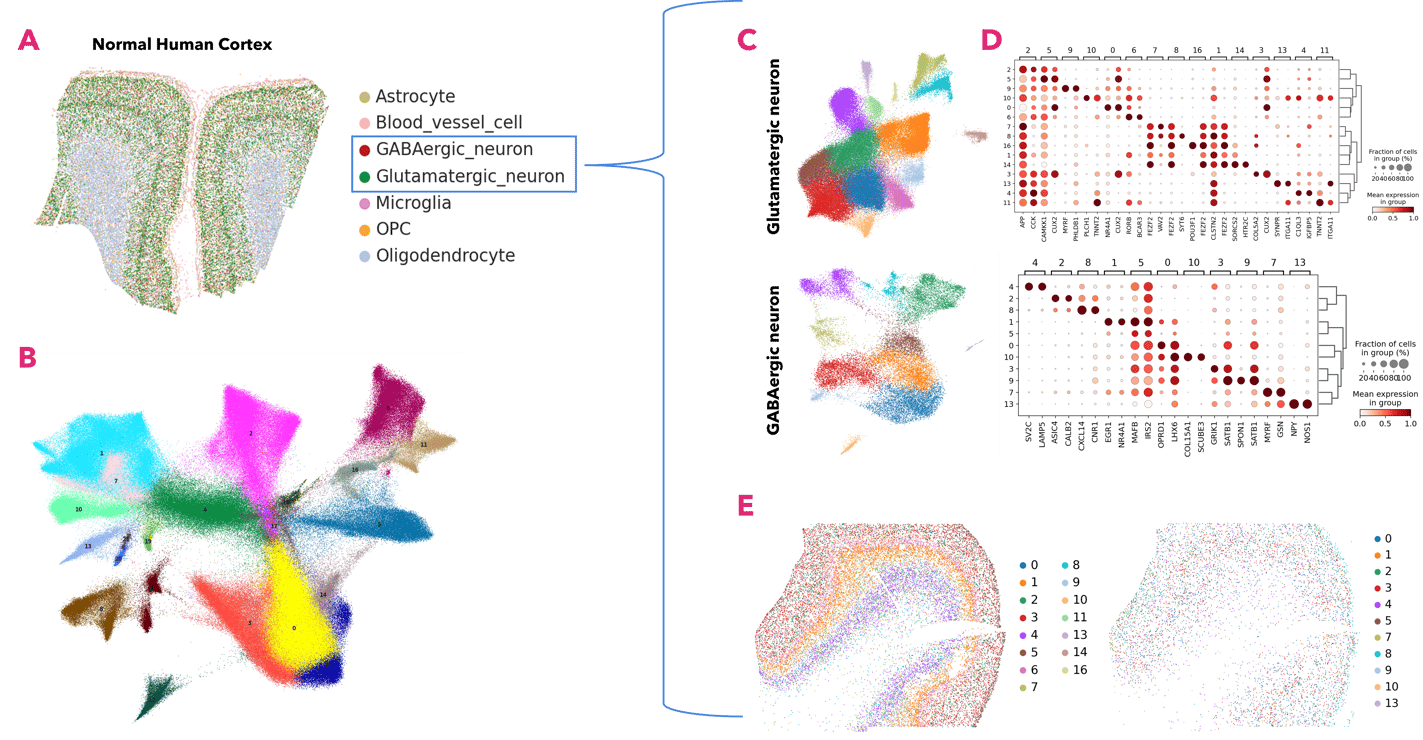
FIGURE 6
Figure 6: Deeper cell typing on human cortex tissue enabled by MERSCOPE 1000 Plex Panel. A) Spatial expression of all major neuronal cell types in the normal human cortex based on common marker genes. B) UMAP showing 20+ clusters based on unbiased clustering of 1000 genes. C) UMAP of glutamatergic (upper) and GABAergic neuron (lower) sub-clusters. D) Expanded gene panel enables deeper cell typing of GABA- and Glutamatergic neurons with spatial context. E) Spatial distribution of sub-clusters of glutamatergic (left) and GABAergic (right) neurons.
On Demand 1000 Plex Webinar with LabRoots
Title: Unveiling Brain Complexity with the MERSCOPE® Platform Using 1000-plex Gene Panels
Date: Tuesday, March 12, 2024
Presenters:
Peter Reinhold, Global Product Manager, Assays and Reagents, Vizgen
Dr. Renchao Chen, Ph.D., Application Development Scientist, Vizgen
Learning Objectives:
- Discover high accuracy and detection efficiency of the MERSCOPE 1000 plex gene panel.
- Explore how the spatial profiling of mouse and human brain with 1000 plex gene panel reveals the molecular architecture of the brains.
- Understand how spatial technologies can help uncover the molecular/cellular changes in degenerative diseases, such as Alzheimer's disease.
Download our 1000 Plex Panel Scientific Poster
Unveiling Brain Complexity with the MERSCOPE Platform Using 1000-plex Gene Panels: Insights into Healthy and Diseased States
Download our AGBT 2024 poster to learn about studying neurodegenerative disease using 1000 plex gene panels on the MERSCOPE Platform.


